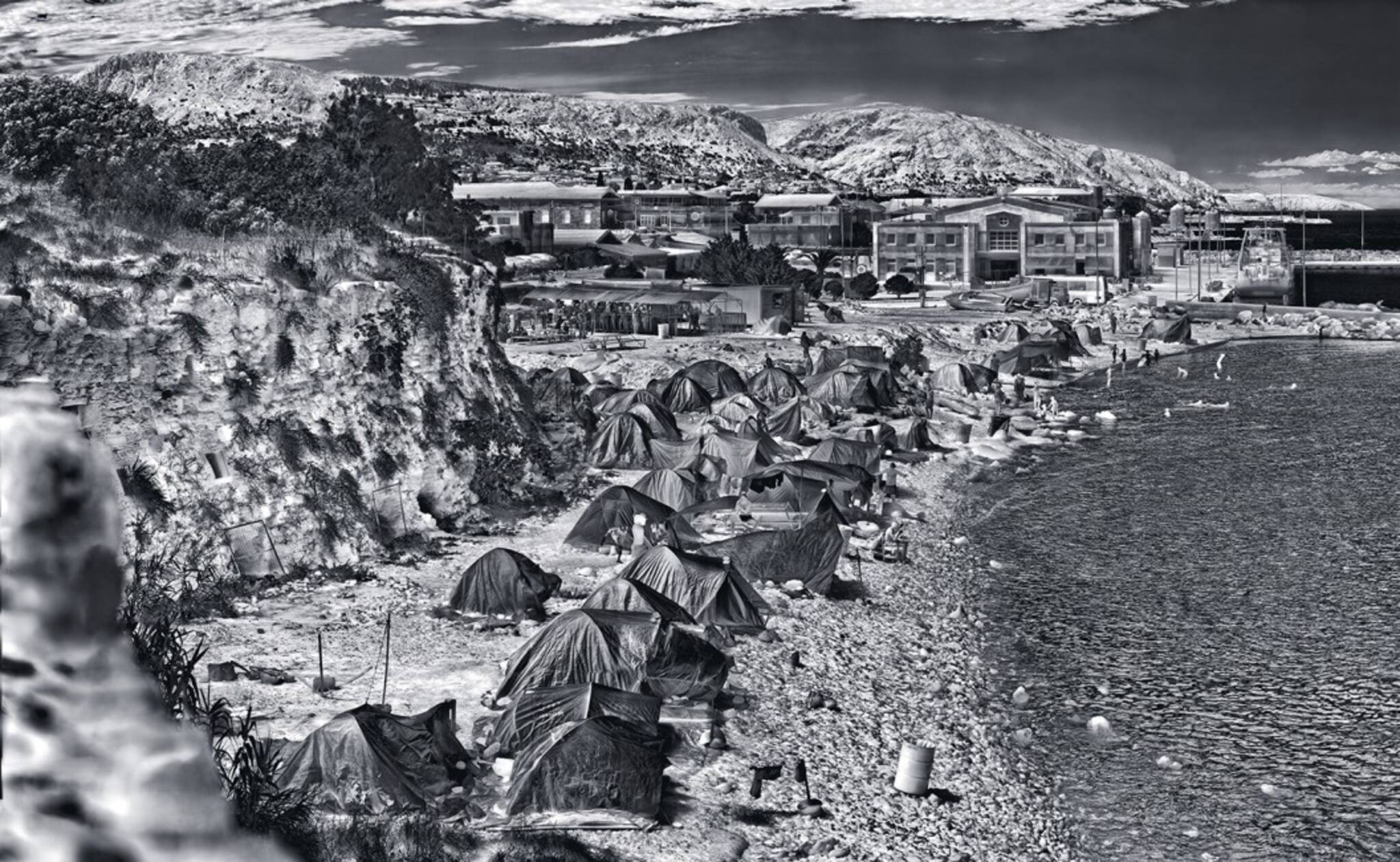
The Castle at Arsenal Contemporary Toronto
Richard Mosse’s new series, The Castle, is a meticulous documentation of refugee camps and staging sites along mass migration routes into the European Union from the Middle East and Central Asia.
To create each “heat map,” Mosse employs a military-grade thermal video camera that can detect human body heat from a distance of 30.3km. The camera depicts a heat signature of relative temperature difference, showing the incandescence of bodily warmth in relation to the climatic conditions of the surrounding environment.
Regarded as a weapons technology, the camera is protected under International Traffic in Arms Regulations (ITAR), making it difficult to transport over international borders. Designed for border surveillance, battlefield situational awareness, insurgent detection, tracking, and targeting, as well as search and rescue, this camera can be understood as part of the military-humanitarian complex that constitutes the EU’s response to the ongoing mass-migration crisis.
The result of numerous preparatory visits, often revealing changing immigration policy, Mosse has filmed each site from high elevation to reveal camps that are frequently closed, off limits, or restricted. Mosse has gathered the source footage used to composite the resulting “heat maps” by attaching this super-telescopic heat-sensitive camera to a robotic motion-control arm.
These durational photographs are thermal panoramas made up of hundreds or sometimes thousands of overlapping “cells” or individual frames, a truncated spatio-temporal form that speaks to the lived experience of refugees indefinitely awaiting asylum and trapped in a Byzantine state of limbo. In Skaramaghas (2016)—one of several works from The Castle series that comprise this exhibition—Mosse documents a refugee camp adjacent to a busy container port in Athens, revealing the glaring disconnect between the brisk free trade of globalized capitalism and the dehumanizing erosion of international refugee law in European nation states.
Describing space, detail, and perspective in ways that seem to echo depictions of medieval cityscapes, or certain kinds of classical painting, such as those by Pieter Breughel or Hieronymus Bosch, these images document the fences, security gates, portaloos, loudspeakers, food queues, tents, and temporary shelters of camp architecture, as well as isolated disembodied traces of human and animal motion and other artifacts that disrupt each precarious composition and reveal its temporal construction.
The various ways in which each camp interrelates with adjacent citizen infrastructure are made apparent—by turns marginal, ruderal, isolated, overlooked, concealed, integrated, dispersed, regulated, militarized—allowing the reader to meditate on the situations in which these people are forced to live, and what that shows us about the approach and policies of each host nation and community.
To make Grid (Moria) (2017), a central work in the exhibition, Mosse returned to Moria refugee camp on the Greek island of Lesbos on numerous occasions over a two-year period, during which the camp went from being an open facility to a restricted one, and was partially burned twice in protest by refugees. Moria has some of the worst conditions of any refugee camp in Europe. On Mosse’s last visit, in January 2017, extremely cold conditions had resulted in the hypothermic death of refugees living in tents.
Grid (Moria) is comprised of an array of 16 video screens displaying original source footage used to construct each “heat map,” showing the automatic pan and tile motion and resulting vibration of the long-range camera mounted on the robotic arm. Each video screen plays back the same clip at a different interval, being a kind of musical round or “perpetual canon” in visual terms.
Reading heat as both metaphor and index, these images do not attempt to represent the refugee crisis in a seemingly “transparent” or objective way. Instead, they ask how the notion of “the visible” might be expanded and how, by using a scopic technology against itself, the conditions of visibility might be fundamentally restructured. The Castle allows the reader to meditate on the current conditions of refugees through ideas of hypothermia, exposure, climate change, mortality, and biopolitics.
Organized by CONTACT in partnership with Arsenal Contemporary Toronto
Curated by Bonnie Rubenstein
